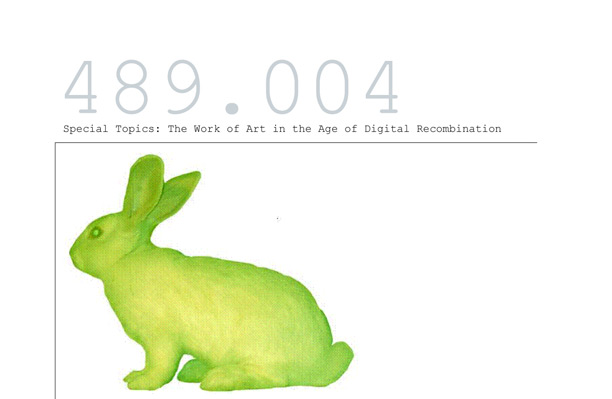
Information and communication technologies have a profound impact on our daily lives and on our culture. The domain of art is no exception. Computer-based technologies have important implications for the production, distribution and reception of traditional works of art. Nowadays, visual artists, moviemakers, musicians and writers use digital techniques such as digital imaging, sampling and word-processing to produce their artworks; these works are increasingly being distributed via electronic channels (CDs, CD-roms, the Internet), and often we use computers (PC’s, iPods etc.) to watch them and/or listen to them. In addition, in the last decades we have witnessed the development of new computer-inspired artistic genres (such as NetArt, techno and dance, cyberpunk), as well as entirely new digital art forms (interactive narratives, movies and installations, computer games, virtual reality). These developments affect both the ontology (the ‘nature’) and the aesthetics of the traditional work of art. In this course we will explore the ontology and aesthetics of digital works of art. Although the main focus will be on the visual arts, examples from other artistic disciplines (movies, interactive novels, games) will also be taken into account. The starting point will be Walter Benjamin’s essay ‘The work of art in the age of mechanical reproduction’ (1936). In this epochal essay Benjamin investigates how mechanical reproduction transforms the work of art, claiming that in this ontological transformation the cult value, that once characterized the classical, auratic work of art, has been replaced by exhibition value. The hypotheses we will investigate during the course are, firstly, that in ‘the age of digital recombination’, the database constitutes the ontological model of the work of art and, secondly, that in this transformation the exhibition value is being replaced by what we might call the manipulation value. Like Benjamin, we will not only discuss the aesthetical implications of this ontological transformation, but the economical and political implications as well. We will also discuss several texts of scholars that have continued Benjamin’s analysis in their work, such as Jos de Mul, Romantic Desire in (Post)Modern Art and Philosophy. Albany, N.Y.: State University of New York Press, 1999. Lev Manovich, Lev. The Language of New Media. Cambridge, Mass.: MIT Press, 2002. (paperback edition) Hans-Ulich Gumbrecht and Michael Marrinan, eds. Mapping Benjamin : The Work of Art in the Digital Age. Stanford, CA Stanford University Press, 2003. (paperback edition) Estimated cost of materials: $50 or more, but less than $100. IV. 3, 4
Instructor(s): Jos de Mul
email:
email:
Monday
1:00pm - 4:00pm
210 Tappan
3 Credit Seminar